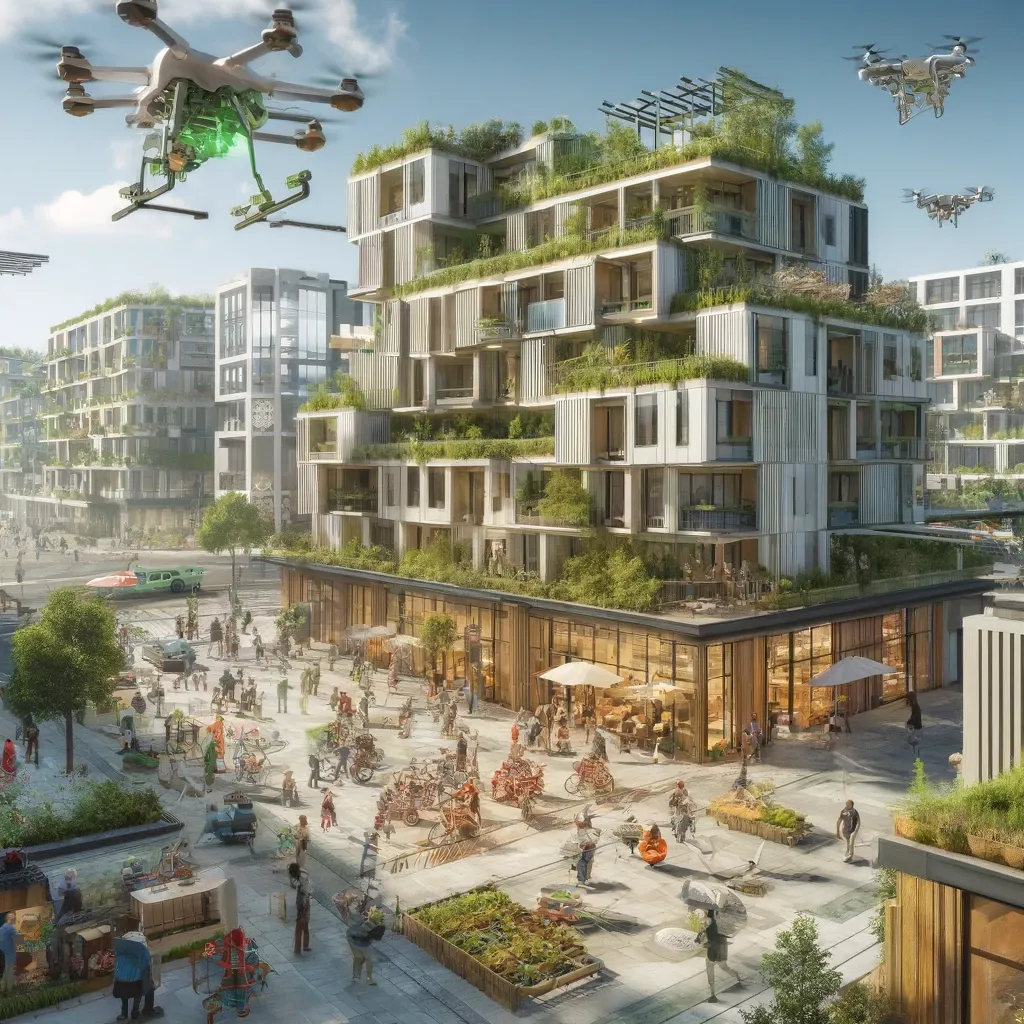Construction of multi-family residential buildings - a report on the global market until 2024. Includes companies such as PulteGroup, Turner Construction, AECOM Technology Corporation, Greystar Real Estate Partners, and Balfour Beatty.

Dublin, March 28, 2024 (GLOBE NEWSWIRE) - The report "Global Market for Multi-Family Residential Buildings (Apartments) until 2024" has been added to the ResearchAndMarkets.com platform.
The market for the construction of multi-apartment residential buildings (apartments) has been successfully developing in recent years, increasing from $816.88 billion in 2023 to $887.81 billion in 2024, with a compound annual growth rate (CAGR) of 8.7%. The growth observed during the historical period can be attributed to demographic trends, economic conditions, urbanization, as well as factors such as interest rates, financing, rental market dynamics, and broader sociocultural changes.
The market is expected to continue growing in the coming years, reaching $1265.59 billion by 2028, with a compound annual growth rate (CAGR) of 9.3%. This projected growth is driven by changes in work and living patterns, accessibility challenges, sustainable building practices, urban revitalization, and demographic shifts. Key trends include the integration of technology into living spaces, urbanization, adaptive and flexible spaces, as well as a focus on health and well-being-oriented design.
The expected population growth should be seen as a factor that contributes to market expansion. As the population increases, there is a corresponding need to accommodate more people, which leads to an increase in the construction of multi-family residential buildings, such as apartments. According to data provided by the United Nations, a global intergovernmental organization, the world population reached 8 billion in November 2022, compared to 7.79 billion in 2020. This population growth serves as a driver for the growth of the multi-family residential construction market.
The growing desire to live in cities is expected to contribute to the expansion of the market. Urban life, characterized by a lifestyle associated with densely developed areas and increased access to amenities, services, and cultural opportunities, has become a preference for many people. Multi-family housing construction, especially apartments, offers efficient and compact solutions that meet the demands of urban living. According to data from the World Bank in April 2023, more than half of the world's population lives in urban areas, and this urban population is expected to increase to 6 billion people by 2045, which is 1.5 times more. Thus, the growing aspiration for urban living serves as a factor driving market development.
Sustainability is emerging as an important trend gaining momentum in the market for multi-family residential buildings, with companies actively implementing new technologies to maintain their positions. One example is the Dahlin Group, based in the USA, which introduced a prototype of a mini-home called Mod Hive in December 2021 to address the issue of affordable housing shortages in Salt Lake City. The Mod Hive prototype offers flexibility, allowing it to be used as a compact cluster on a single lot or as part of a well-planned development across multiple lots. The sustainable concept involves creating a small community with elements such as a garden, an open gathering area, and a fire pit, all designed with thoughtful planning.


Large companies involved in the construction of multi-family residential buildings, especially apartments, are actively focused on developing advanced tools such as carbon emissions calculators to provide clients with a competitive edge in the market. A carbon emissions calculator is a tool designed to compute and compare carbon emissions data, taking into account specific factors such as water and energy consumption. For example, in November 2023, SilverDoor, a UK-based company specializing in serviced apartments, launched a Carbon Emissions Calculator for the serviced apartment sector. This innovative tool allows users to calculate and compare carbon emissions data related to their stay. The carbon emissions calculator uses its own methodology based on specific water and energy consumption in buildings to estimate CO2 emissions for each night spent in the apartments. Emission results are clearly displayed on property profiles within the SilverDoor platform, offering users a transparent comparison with stays in equivalent hotels based on the Cornell Hotel Sustainability Index. This initiative highlights the commitment to environmental sustainability in the multi-family residential construction sector, emphasizing transparency and opportunities for consumers through the use of advanced tools and data analysis.
The report covers market characteristics, its size and growth, segmentation, regional and country breakdown, competitive environment, market shares, trends, and strategies of the market. It tracks historical and forecasted market growth based on geographic data. Covered markets include: types of construction activities: new construction; repair and maintenance; renovation and demolition. By types of costs: construction materials; construction equipment; construction services. By types of application: ownership; rental. Countries: Australia; Brazil; China; France; Germany; India; Indonesia; Japan; Russia; South Korea; the UK; the USA; Canada; Italy; Spain. Regions: Asia-Pacific; Western Europe; Eastern Europe; North America; South America; the Middle East; Africa.
Comment
Popular Posts
Popular Offers



Subscribe to the newsletter from Hatamatata.com!
Subscribe to the newsletter from Hatamatata.com!
I agree to the processing of personal data and confidentiality rules of Hatamatata










